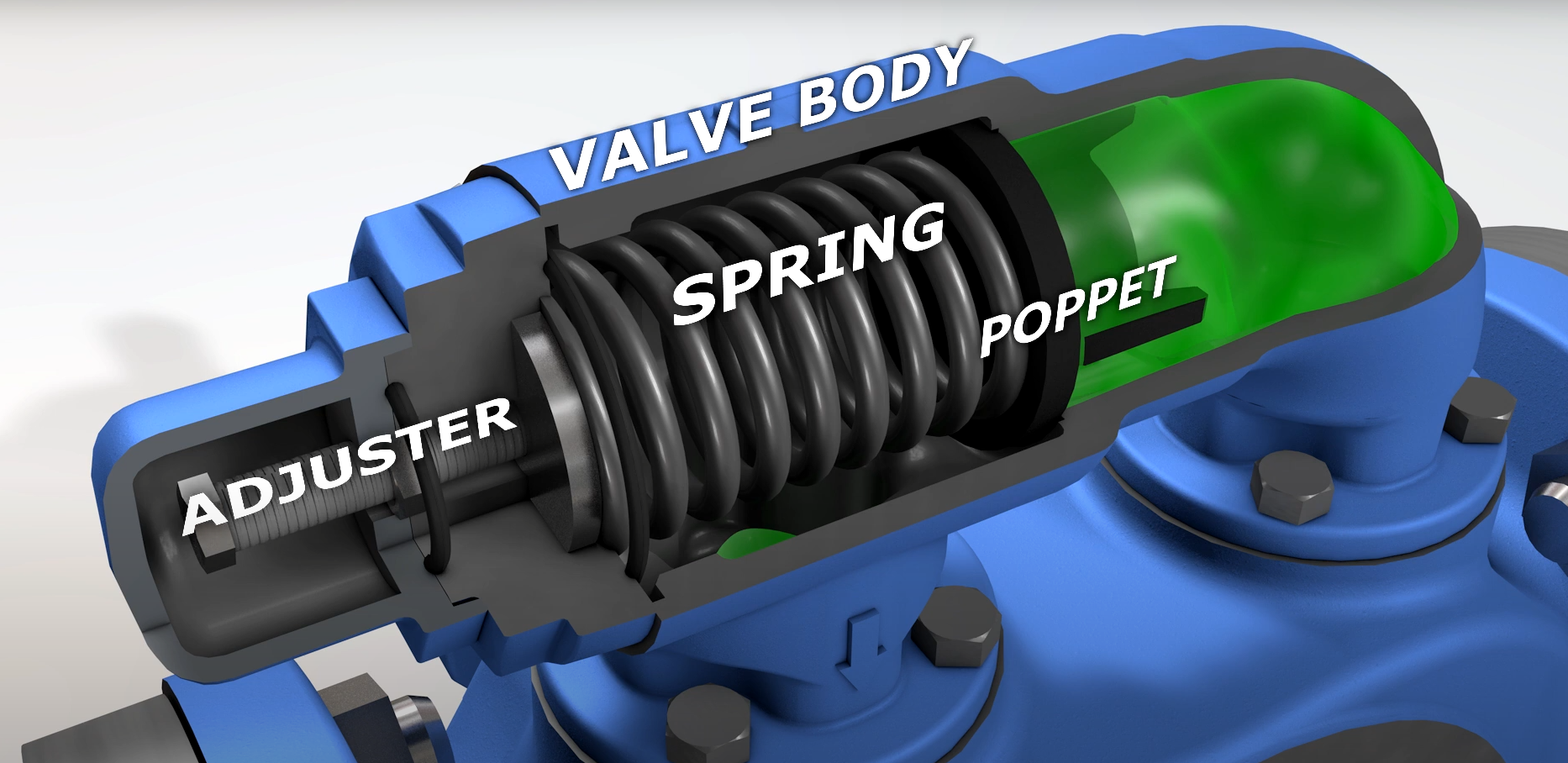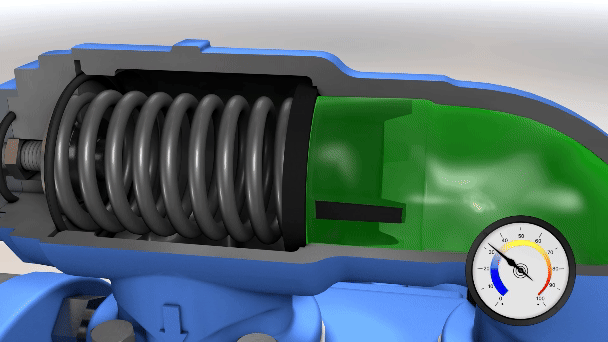How to relief valves on pumps work?
In a process, if the liquid is prevented from being delivered by a blocked or closed discharge line, pressure can build. This buildup of pressure can stall the motor, damage drive equipment, damage the pump, or even burst hoses or piping. To prevent this, pressure relief valves a common choice. The valve consists of several key components: The valve body which houses the internals and connects the valve to the pump, a moving poppet, one or more springs, and an adjusting screw to compress the springs and adjust the pressure setting.

As pressure at the valve inlet increases, it eventually reaches a point where the spring compresses slightly, moving the poppet and bypassing a small amount of pumped liquid. This is known as the “cracking pressure” of the valve. In an internal relief valve, this flow is diverted back to the suction side of the pump. If pressure continues to build, the valve will open more to divert more flow back to the suction side. If the discharge line is blocked or closed entirely then 100% of the pump’s capacity is cycled through the valve. This is called the “full bypass pressure." When the pressure returns to normal, the spring moves the poppet to close the valve and the pump returns to full capacity.
